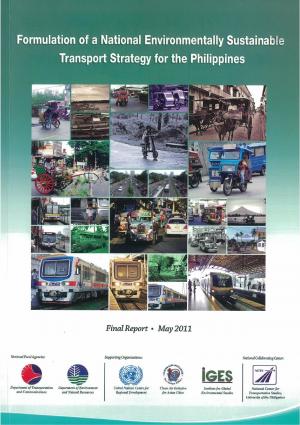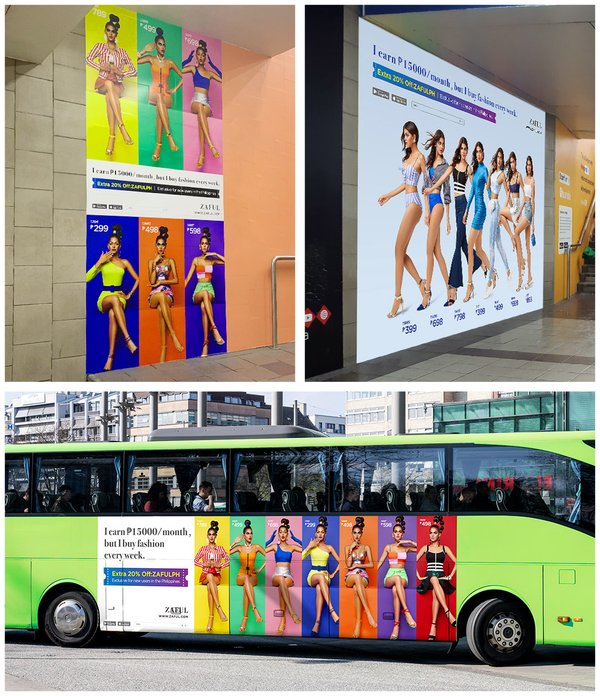Budget Friendly Transit Advertising Philippines for Brand Awareness
Budget Friendly Transit Advertising Philippines for Brand Awareness
Blog Article
Recognizing the Function of Transportation Marketing in Enhancing Brand Name Exposure and Consumer Engagement
Transit advertising has actually arised as a pivotal aspect in the advertising landscape, using one-of-a-kind opportunities for brands to raise their visibility and engage consumers effectively. With the ability to reach a restricted and varied target market during their daily commutes, these advertising methods are not simply concerning visibility; they are about producing purposeful connections with possible consumers. As we explore the diverse benefits and ingenious strategies within transportation advertising and marketing, it ends up being vital to think about just how these components collectively affect consumer perception and habits, elevating inquiries concerning their long-lasting effect on brand name loyalty.
Meaning of Transit Advertising
Transit marketing describes the technique of advertising products, solutions, or brand names through promotions put around public transport systems. This kind of advertising and marketing encompasses a range of placements, consisting of posters on buses and trains, electronic displays at transportation stations, and covers on the exterior of automobiles. It intends to get to a diverse target market, taking advantage of the high foot website traffic connected with public transit.
Transportation advertising and marketing is tactically positioned to capture the focus of commuters, that often invest considerable time waiting or taking a trip. By incorporating promotions into the day-to-day regimens of individuals, brand names can produce a lasting perception and foster brand name recognition. The tool is especially reliable in city environments, where public transport is a primary setting of travel.
In addition, transit advertising and marketing can promote local targeting, enabling companies to get to details demographics based on transit paths and terminal areas. As urban populaces grow and the use of public transport rises, this advertising and marketing approach has acquired importance as an essential part of incorporated advertising and marketing techniques. The vibrant nature of transit advertising and marketing, combined with its ability to engage customers in a restricted setting, emphasizes its value in modern advertising techniques.
Benefits of Transit Advertising And Marketing
The performance of transportation advertising lies in its ability to provide a wide range of benefits to brand names seeking to improve presence and engagement. Among the main benefits is the substantial reach it offers; transit advertisements can successfully target varied demographics across metropolitan locations, getting to both pedestrians and commuters alike. This wide exposure substantially increases brand awareness.
One more advantage is the high frequency of impacts. As transportation cars follow established routes and stop at multiple areas, they create repetitive direct exposure that enhances brand name messages. This regularity cultivates knowledge, which is critical in customer decision-making.
Transit advertising and marketing is likewise cost-effective contrasted to other media systems. Offered its extensive reach and possibility for high impacts, brands typically experience a lower price per thousand impacts (CPM), maximizing their advertising spending plan.
Additionally, transit ads can develop a feeling of area connection. By lining up with regional transportation systems, brand names can reverberate with local target markets and cultivate a sense of local satisfaction. This local method boosts brand name commitment and interaction, making transit advertising and marketing an engaging selection for companies aiming to her latest blog solidify their visibility in the market.

Reliable Methods for Transportation Projects
To optimize the impact of transit projects, brand names need to utilize critical planning and execution customized to their target market. First, identifying the demographic qualities of the audience utilizing public transportation is important. This permits brands to create personalized messaging that resonates with possible consumers.
Following, picking the best transit mediums is crucial. Whether making use of bus wraps, train posters, or electronic screens, each medium has one-of-a-kind benefits that can enhance visibility. For example, lively visuals on bus wraps can stand out, while electronic ads can be upgraded frequently to mirror timely promos.
Furthermore, incorporating a cohesive branding method across transportation platforms ensures consistency and enhances the brand's identity. Utilizing distinctive styles and remarkable taglines will enhance brand name recall among travelers.
By utilizing these techniques, brands can efficiently harness the potential of transportation advertising and marketing, promoting higher recognition and connection with their target audience. Inevitably, a well-executed transit campaign can drive significant growth in brand presence and customer engagement.

Gauging Impact and Engagement
In examining the performance of transit ad campaign, accurate measurement of influence and involvement is necessary for brands seeking to maximize their marketing techniques. Metrics such as reach, regularity, and impacts provide foundational data to evaluate presence. Evaluating these aspects helps figure out the number of potential consumers are subjected to the ads throughout their day-to-day commutes.
Involvement can be additional assessed through customer interactions, such as website traffic, social media mentions, and straight feedbacks to calls-to-action featured in the ads. click for more Using tools like QR codes or one-of-a-kind URLs can assist in monitoring of customer actions straight connected to transportation campaigns. Surveys and responses mechanisms likewise function as useful methods to gather qualitative information on customer assumptions and recall of the advertisement.
Moreover, advanced analytics and acknowledgment versions can correlate transportation exposure with succeeding purchasing actions, providing insights into the return on investment. By utilizing a detailed method that incorporates measurable and qualitative actions, brands can develop a nuanced understanding of their transit marketing impact. Ultimately, this data-driven strategy enables brands to improve their projects, guaranteeing they resonate efficiently with target market and enhance overall brand name exposure.
Study of Successful Campaigns
Effective transportation marketing campaign work as compelling examples of exactly how effective techniques can elevate brand exposure and engagement. Transit Advertising Philippines. One noteworthy situation is the "I Love New York" campaign, which transformed the city's image and attracted numerous tourists. By utilizing metro ads, billboards, and bus wraps, the campaign produced a solid, natural brand name identity, leading to a substantial uptick in tourist and neighborhood company patronage
An additional excellent project is Coca-Cola's "Share a Coke" effort, which leveraged transportation marketing to individualize the brand experience. By featuring popular names on promotional products across different transportation platforms, Coca-Cola promoted a deeper psychological link with customers, motivating them to share their experiences on social media sites.
In addition, the "Got Milk?" campaign properly utilized public transportation ads to reach a broad target market, enhancing the message of the importance of milk in a well balanced diet regimen. The project saw a quantifiable rise in milk consumption in target demographics.
These situation studies highlight that when implemented attentively, transportation advertising and marketing can considerably boost brand presence, foster customer involvement, and drive quantifiable outcomes, showing its vital duty in modern marketing methods. - Transit Advertising Philippines
Final Thought
In verdict, transit advertising offers as an important useful reference tool for boosting brand visibility and cultivating customer involvement. Eventually, the ability to measure interaction and examine successful instance research studies highlights the effectiveness of transportation advertising in driving brand name loyalty and customer interactions.
Transit marketing has emerged as a critical element in the advertising landscape, providing one-of-a-kind possibilities for brands to raise their presence and involve consumers effectively.Furthermore, transportation advertising and marketing can facilitate local targeting, permitting companies to reach certain demographics based on transit paths and terminal places.In reviewing the efficiency of transit marketing projects, precise dimension of effect and involvement is important for brands seeking to maximize their advertising approaches.Successful transportation advertising campaigns serve as engaging examples of how effective approaches can elevate brand exposure and involvement.In final thought, transit advertising and marketing offers as a vital tool for boosting brand exposure and cultivating consumer engagement.
Report this page